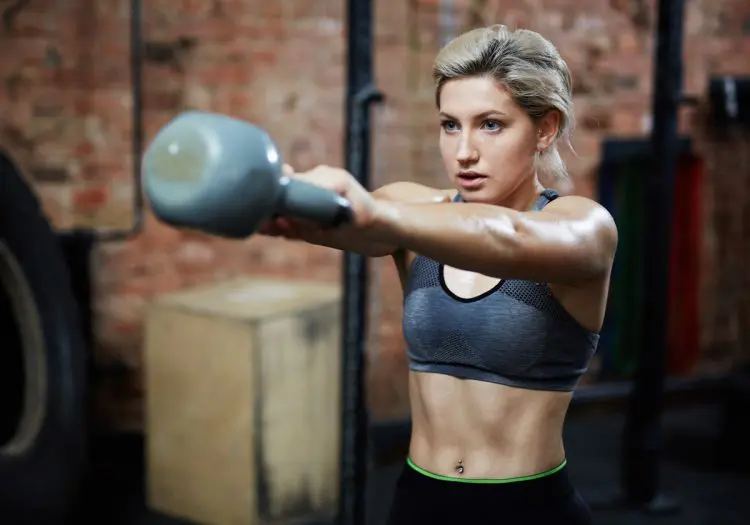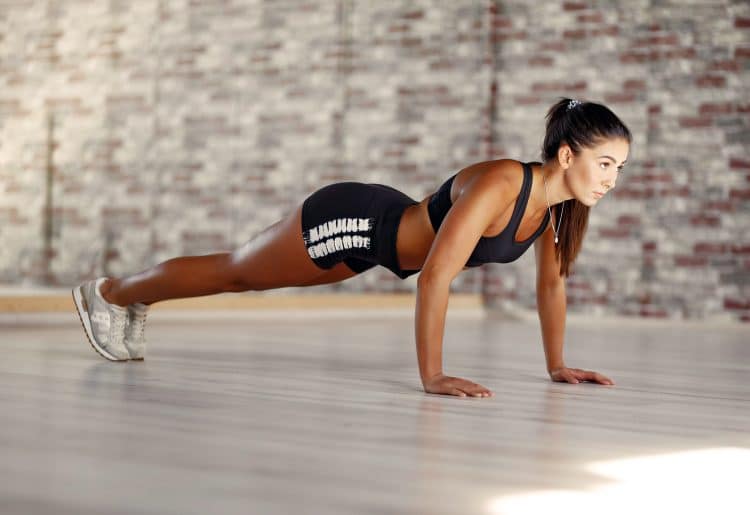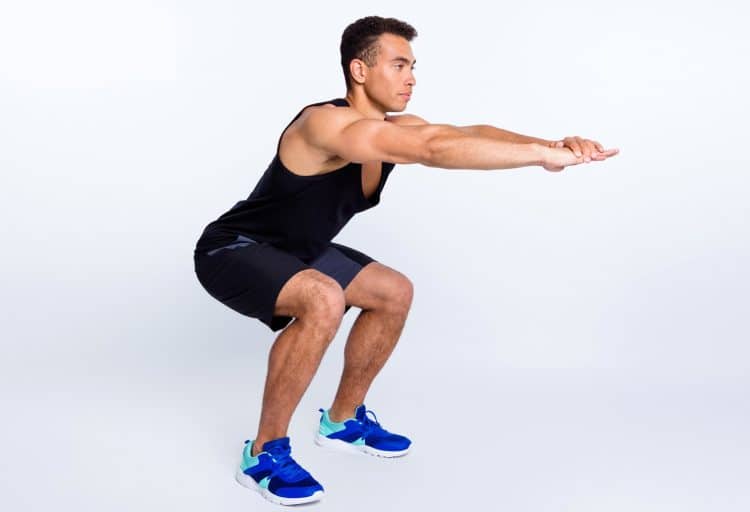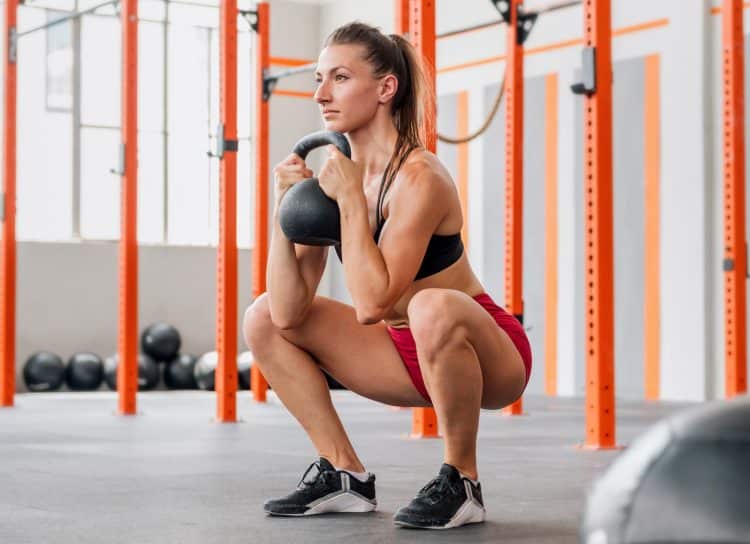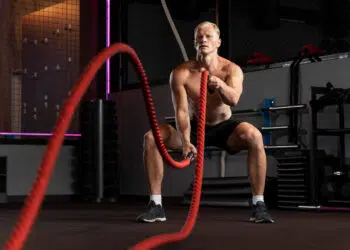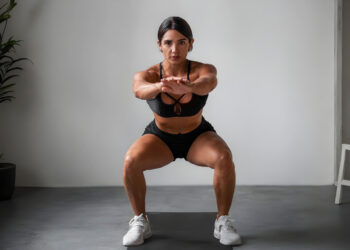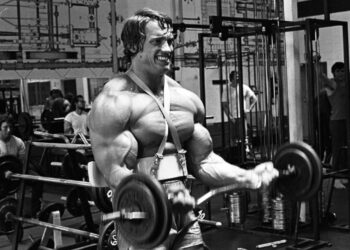I’m a veteran personal trainer, and part of my job is to help people make fitness a part of their daily lives. After all, while any workout is a good workout, your results will always be better if you exercise regularly.
However, numerous barriers can make exercise consistency a challenge. According to research published on PubMed, these barriers include (1):
- Lack of money or facilities
- Unsure how to start
- Lack of confidence
- Nobody to exercise with
- Lack of enjoyment
- Insufficient time
In my experience, which is supported by this research, lack of time is usually the most challenging obstacle to overcome. Life can get pretty busy, and workouts are often the first casualty when time is short.
While the occasional missed workout won’t hurt your progress, skipping more workouts than you complete definitely will.
The good news is that you don’t have to spend hours each week exercising. In fact, studies suggest that short, intense workouts can be equally, if not more effective than longer, less intense workouts (2).
This type of training is called High-Intensity Interval Training, or HIIT for short.
Level Up Your Fitness: Join our 💪 strong community in Fitness Volt Newsletter. Get daily inspiration, expert-backed workouts, nutrition tips, the latest in strength sports, and the support you need to reach your goals. Subscribe for free!
HIIT workouts can take as little as 20-30 minutes and often require minimal or even no exercise equipment. Consequently, this type of training cancels out many of the most common workout barriers. As such, HIIT is practically an excuse-free way to work out.
In this article, I share three of my favorite HIIT workouts for maximizing kilocalorie burn.
HIIT Basics
So, what is High-Intensity Interval Training, aka HIIT? Good question! You can read all about HIIT in this comprehensive beginner’s guide, but to save you the bother, here’s the TLDR version!
HIIT workouts alternate short periods of very intense exercise with brief, usually incomplete, rests. Typically, you’ll push your heart rate up to 85-95% of your maximum and then allow it to drop to a more comfortable level as you recover.
For example, you might sprint on a stationary bike for 20 seconds, pedal slowly for 40 seconds, and repeat that sequence for 10 sets.
There are many ways to interpret HIIT training, and there are lots of different variations to try. Some use conventional cardio equipment and activities, such as treadmills, rowers, jump ropes, etc., while others use resistance and calisthenics exercises. There are also workouts that combine exercise modalities.
All this variety means that HIIT workouts are adaptable and flexible and can be modified to match the needs of most exercisers.
Regardless of the type of HIIT workout you choose, the end result is always the same: a short, intense, effective workout that burns more kilocalories and gets you fitter than longer, lower-intensity workouts.
Kilocalorie Expenditure with HIIT
So, how many kilocalories can you burn with HIIT? The answer depends on several factors, including how hard and long you exercise, your body weight, and your current fitness level. That said, an average exerciser weighing about 170lbs. should be able to burn 300 kilocalories in 30 minutes. Read also: How Many Calories Do You Burn Doing Circuit Training?
Research from PubMed suggests that HIIT uses significantly more energy than steady-state cardio (3). Not only does HIIT burn more energy during your workout, but it also increases your energy expenditure for several hours afterward. This is called EPOC (excess post-exercise oxygen consumption) or the “afterburn effect.”
Read also: Metabolic Training for Fitness and Faster Fat Loss
Three HIIT Workouts for Maximum Calorie Burn
Do you want to burn more kilocalories in less time? I’m here to help! Here are three of my favorite HIIT workouts, each one tried, tested, and approved by my army of personal training clients.
But, before you begin, make sure you prepare your body with a thorough warm-up. Start with 5-10 minutes of easy progressing to moderated-paced cardio, e.g., walk, jog, run. Next, do some dynamic mobility and flexibility exercises for your major joints. Finish your warm-up with a quick practice of the exercises you are about to perform.
Ready to go? Then let’s get to work!
Workout 1 – HIIT Cardio and Calisthenics Workout
High-intensity interval training usually involves cardio or some form of resistance training. However, there is no rule that says you must choose between these two methods. In fact, I’ve found that combining them works really well and produces a very comprehensive, time-efficient workout.
Complete the following sequence as quickly as you can. Feel free to adjust the distances and rep counts according to your fitness.
- Run or row 400 meters
- 10 pull-ups/chin-ups
- 20 push-ups
- 30 air-squats
- Rest for 1-2 minutes and repeat 3-4 more times.
Workout 2 – Four Round Tabata Superset Workout
Tabatas involve doing eight sets of 20-second high-intensity exercise with 10-second rests separating each effort. Invented by Japanese sports scientist Izumi Tabata, this ultra-short workout protocol is a proven way to burn kilocalories, burn fat, and even build muscle (4).
My 20-minute Tabata HIIT workout requires no equipment, so it’s ideal for home exercisers. I’ve put the exercises into pairs to avoid overloading one particular muscle group. This should allow you to maintain a faster pace and maximize your rep count and kilocalorie expenditure.
Rest one minute between rounds, which should be just enough time to catch your breath and grab a quick drink of water. Do as many reps as you can for each work interval, but make sure you perform the exercises with good form to minimize your risk of injury.
Round One:
Level Up Your Fitness: Join our 💪 strong community in Fitness Volt Newsletter. Get daily inspiration, expert-backed workouts, nutrition tips, the latest in strength sports, and the support you need to reach your goals. Subscribe for free!
Repeat this sequence four times:
- 20 seconds mountain climbers, 10 seconds rest
- 20 seconds jump jacks, 10 seconds rest
Round Two:
Repeat this sequence four times:
- 20 seconds push-ups, 10 seconds rest
- 20 seconds alternating lunges, 10 seconds rest
Round Three:
Repeat this sequence four times:
- 20 seconds air-squat, 10 seconds rest
- 20 seconds bicycle crunch, 10 seconds rest
Round Four:
Repeat this sequence four times:
- 20 seconds burpees, 10 seconds rest
- 20 seconds plank jacks, 10 seconds rest
Related: Burn Fat and Build Muscle with Our Top 10 Tabata Workouts
Workout 3 – Dumbbell and Jump Rope HIIT Workout
Dumbbells and jump ropes are perfect tools for HIIT workouts. You can use dumbbells to train virtually every part of your body, and jumping rope is one of the best low-tech cardio exercises. Combining these two exercise methods is like adding one plus one to make three!
You’ll be alternating between dumbbell exercises and jump rope for this workout. The jump rope is your active recovery, so don’t go too fast. Instead, use it as an opportunity to rest your hard-working muscles and catch your breath.
Work your way down this list. Use the 20-second rests to move from one exercise to the next. Use light to moderate weights so you can keep pumping out the reps for the entire duration. Feel free to adjust the work periods to match your current fitness.
- Goblet squat 40 seconds
- Rest 20 seconds
- Jump rope 40 seconds
- Rest 20 seconds
- Dumbbell bench press 40 seconds
- Rest 20 seconds
- Jump rope 40 seconds
- Rest 20 seconds
- Dumbbell lunge 40 seconds
- Rest 20 seconds
- Jump rope 40 seconds
- Rest 20 seconds
- Dumbbell renegade row 40 seconds
- Rest 20 seconds
- Jump rope 40 seconds
- Rest 20 seconds
- Dumbbell curl and press 40 seconds
- Rest 20 seconds
- Jump rope 40 seconds
- Rest 20 seconds
Rest for 1-2 minutes and repeat the entire sequence 1-2 more times.
Related: I Did 200 Jump Ropes Daily Before Breakfast — This Is What Happened to My Stamina and Weight
Frequently Asked Questions
Do you have a question about my three HIIT workouts or any other aspect of this type of training? No problem, because I’ve got the answers. Need more information? Drop me a line in the comments section below, and I’ll get back to you ASAP.
1. Is HIIT Good for Fat Loss?
HIIT is very effective for weight control and fat loss. Each workout burns a lot of kilocalories and also elevates your metabolism for several hours afterward, contributing to your total daily energy expenditure.
However, exercise is only part of the fat loss equation, and you must also pay attention to your diet. After all, you could wipe out a week’s worth of HIIT kilocalorie expenditure with a single cheat meal.
So, yes, HIIT is good for fat loss, but only if combined with a sensible diet and kilocalorie deficit.
2. Is HIIT Safe?
In my experience, HIIT is a relatively safe workout, and accidents and mishaps are rare. However, the fast pace and high intensity mean that you’ll be pushing your muscles, joints, and cardiorespiratory system pretty hard, which could be an issue if you have an underlying medical condition.
With that in mind, I suggest building a fitness foundation with conventional cardio and strength training, progressing to HIIT when you are ready for your next challenge. Diving into HIIT too soon could lead to injuries, not to mention severe delayed onset muscle soreness (DOMS).
3. How Often Can I Do HIIT?
HIIT workouts are short, but they can still take a lot out of your body. Remember, muscles only get fitter and stronger while you rest, so working out too often can be counterproductive.
Consequently, I recommend limiting HIIT to 3-4 times a week, preferably on non-consecutive days, to allow time for rest and recovery. If you want to work out more often than this, I suggest alternating HIIT with low-intensity cardio, stretching, and other less demanding workouts.
4. Which is Better – HIIT or Conventional Cardio?
HIIT and conventional cardio can help you get fit and burn kilocalories and fat. The main difference is that HIIT tends to burn more kilocalories per minute, and the workouts are usually shorter.
However, conventional cardio workouts are generally easier, and many people find them more enjoyable. In addition, the lower level of intensity means you can usually do regular cardio more often than HIIT.
Is one better than the other? The answer to that question depends on you! If you are already reasonably fit, short on time, and want the best possible results from the least amount of exercise, HIIT is probably the best way to go.
But, if you prefer to train at a slower pace and have the time for longer, more frequent workouts, conventional cardio could be a better fit. Of course, you don’t have to choose between HIIT and regular cardio; most training schedules have room for both.
Closing Thoughts
HIIT is one of the few fitness trends that lives up to the hype surrounding it. Workouts are short and effective and can help you burn fat and lose weight in record time. However, you’ll have to get comfortable with being uncomfortable with HIIT, as the workouts can be brutal.
HIIT workouts provide plenty of bang for your buck, but remember, it’s not the only way to work out. Conventional low-intensity cardio can also be effective, even if it’s less time-efficient.
Ultimately, the best type of workout is the one you enjoy, so try them both and see which one you prefer.
References:
- Hoare E, Stavreski B, Jennings GL, Kingwell BA. Exploring Motivation and Barriers to Physical Activity among Active and Inactive Australian Adults. Sports (Basel). 2017 Jun 28;5(3):47. doi: 10.3390/sports5030047. PMID: 29910407; PMCID: PMC5968958.
- Atakan MM, Li Y, Koşar ŞN, Turnagöl HH, Yan X. Evidence-Based Effects of High-Intensity Interval Training on Exercise Capacity and Health: A Review with Historical Perspective. Int J Environ Res Public Health. 2021 Jul 5;18(13):7201. doi: 10.3390/ijerph18137201. PMID: 34281138; PMCID: PMC8294064.
- Schaun GZ, Alberton CL, Ribeiro DO, Pinto SS. Acute effects of high-intensity interval training and moderate-intensity continuous training sessions on cardiorespiratory parameters in healthy young men. Eur J Appl Physiol. 2017 Jul;117(7):1437-1444. doi: 10.1007/s00421-017-3636-7. Epub 2017 May 9. PMID: 28488137.
- Emberts T, Porcari J, Dobers-Tein S, Steffen J, Foster C. Exercise intensity and energy expenditure of a Tabata workout. J Sports Sci Med. 2013 Sep 1;12(3):612-3. PMID: 24137082; PMCID: PMC3772611.

